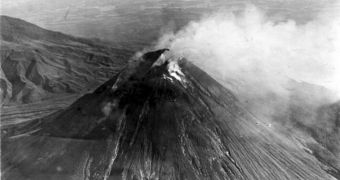Scientists are not in the habit of advising national authorities to evacuate the general population from areas surrounding active volcanoes at the first sings of trouble. However, at times, they are very quick to do so, based on telltale signs that can be interpreted with ease by experts.
Planetary scientists can use a variety of means to detect the real danger that a volcano poses. Some of these mountains may seem threatening when surrounded by smoke, that that could mean it will not erupt.
For instance, if volcanoes can blow off some of their Steam, then pressure does not accumulate in their magma chamber. This lowers the risk of them blowing up, researches have revealed.
A recent example of when experts intervened to get authorities to evacuate the population is in Indonesia. Mount Merapi is a volcano that researchers say could blow up any day now.
People living around the active mountain have been cautioned to leave the area, in anticipation of a new eruption. The last one took place in 2006. Merapi is located on the island of Java, LiveScience reports.
The scientists handling the situation say that not all signs a mountain gives are worthy of being considered. However, others are extremely important, and missing them might mean the difference between life and death for many.
“These signs may include very small earthquakes beneath the volcano, slight inflation, or swelling, of the volcano and increased emission of heat and gas from vents on the volcano,” explains expert John Eichelberger.
The expert holds an appointment as the Volcano Hazards Program (VHP) coordinator at the US Geological Survey (USGS). “Rising magma causes solid rock to break, sending earthquake signals,” he adds.
“This pushes the ground surface upward, and boils off hot gas that travels ahead of the magma,” the expert tells Life's Little Mysteries.
“Most volcanoes give warnings signs beginning weeks or months before they erupt,” Eichelberger adds, revealing that the USGS is using seismic and GPS networks to track changes in the usual behavior of target volcanoes.
Experts used ground-based, airborne and satellite detectors in equal amount, and these tools help them measure gas and heat emissions from the volcanoes.
“Increases in the flow rate of sulfur dioxide and carbon dioxide gases indicate that magma is coming. Water is actually the most abundant gas in magma, but because there is already so much of it in the atmosphere, measuring it is not useful in forecasting eruptions,” he concludes.

 14 DAY TRIAL //
14 DAY TRIAL //